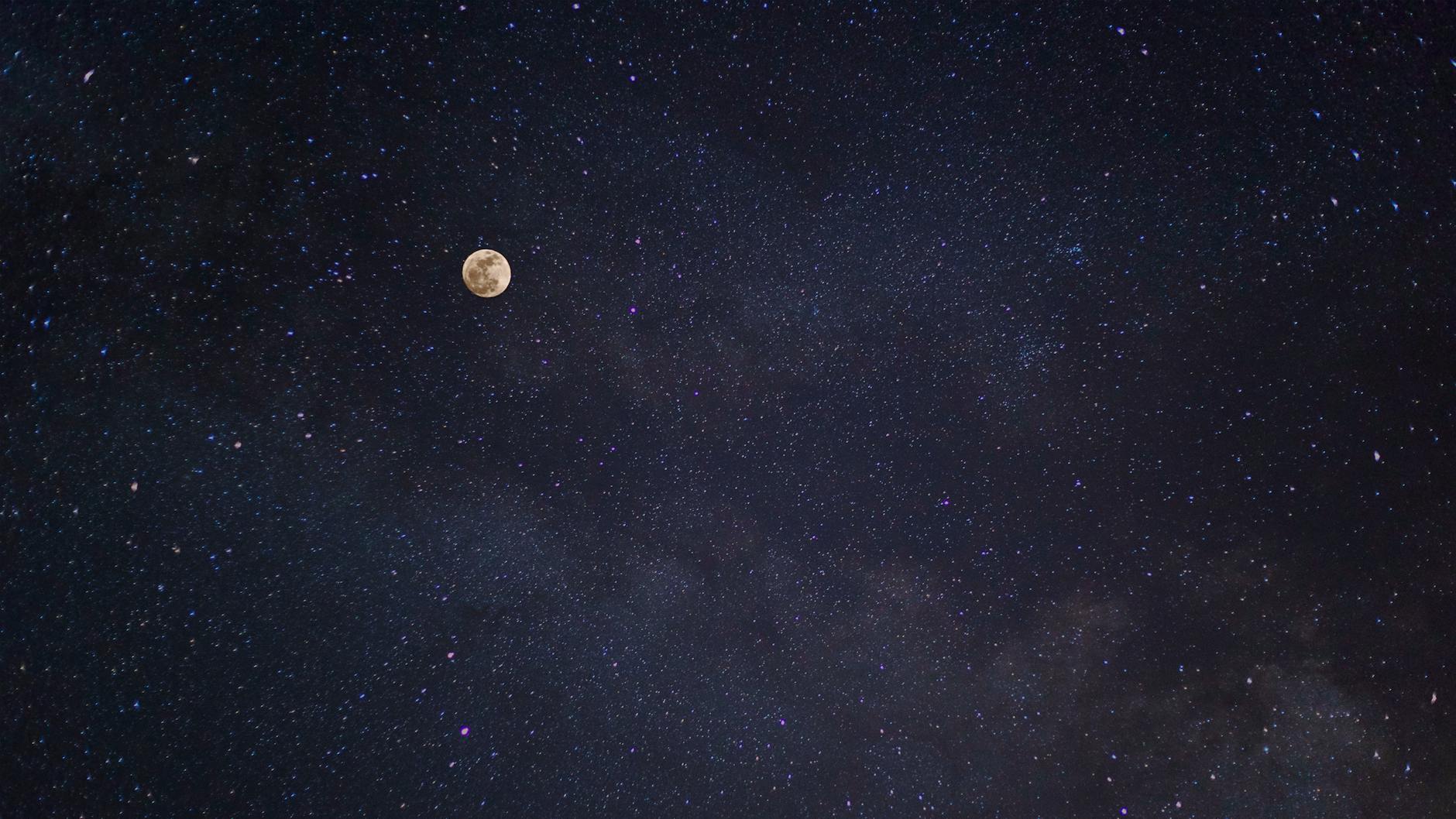Full Moon Tonight: What to Know About This Month’s Celestial Show
The full moon captivates anyone who glances at the night sky, inviting questions, stories, and a sense of wonder that stretches back through all of human history. Tonight, the moon appears in its brightest and most visible phase—drawing both seasoned skywatchers and those who simply pause to gaze upward. This evening’s moon is known as the Sturgeon Moon, reaching its peak illumination at 3:55 a.m. EDT, marking a highlight of the lunar cycle that never fails to impress.
The Full Moon's Science: Why and How It Shines So Bright
 Photo by Min An
Photo by Min An
The moon appears full when Earth is positioned directly between it and the Sun. With sunlight pouring straight onto the near side, we see the entire face aglow. This phase happens about halfway through the moon’s 29.5-day cycle.
On nights like these, the moon’s disk seems almost perfectly round, with up to 100 percent illumination. According to the latest lunar data, today the moon is about 14.6 days old, right in the middle of its cycle. You can dive deeper into the lunar phase details and tonight’s ephemeris at The Sky Live.
What Makes Tonight’s Sturgeon Moon Special?
The August full moon is called the Sturgeon Moon, a name gifted by North American fishing tribes. It signals the time when large sturgeon fish filled lakes and rivers. Every full moon carries its own folklore and symbolism, from the Wolf Moon in winter to the Harvest Moon near autumn’s start.
Tonight’s moon comes with a few more treats:
- The apparent size looks larger if you spot it near the horizon, a quirk known as the “moon illusion.”
- The color may shift to orange or yellow as it rises, thanks to Earth’s atmosphere scattering shorter blue wavelengths.
- Key lunar landmarks are more visible, like the vast Mare Imbrium and the striking Tycho and Copernicus craters, though shadows flatten out and dim some details.
Check the Old Farmer’s Almanac full moon dates for folklore, names, and the timing for future months.
Viewing Tips: How to Get the Best Look at the Full Moon
Tonight is an excellent chance for anyone with or without a telescope to enjoy the moon. Even a quick glance with the naked eye reveals most features. For more detail, a pair of binoculars or a small telescope brings the battered craters, lunar seas (maria), and even subtle rilles into sharper focus.
To maximize moon viewing:
- Find an open space. Hills or locations far from city lights help.
- Look soon after moonrise. The low moon can look impressively large and tinted.
- Bring a map of lunar features. It adds context to what you’re seeing. The NASA Daily Moon Guide is a good starting point.
Wonders of the Full Moon: Visual Illusions and Lunar Landmarks
When the moon hangs low near the horizon, it seems larger than life. This “moon illusion” is a mind game, not reality. The size stays the same, but the context of trees, houses, and hills tricks your eyes. Try covering the moon with your thumb at arm’s length—it never changes size.
On a clear night, you may spot these features:
- Mare Imbrium: A vast, dark plain.
- Gassendi Crater: Famous for its fractured floor.
- Tycho and Copernicus: Bright ray systems spreading far into the lunar seas.
The full phase softens shadows, highlighting broader shapes but hiding rugged relief. The far side of the moon, always turned away due to tidal locking, remains hidden even as the sun rises and sets across its surface during the lunar day.
For a deeper dive into this month’s full moon astronomy, Space.com’s Sturgeon Moon feature provides skywatcher-friendly context.
Cultural Meaning and Astrological Notes
Every culture marks the full moon in its own way. Many calendars track months by lunar cycles, while holidays and festivals—like Ramadan, Passover, or Mid-Autumn Festival—often land on or around the full moon.
Tonight the moon sits in Aquarius at about 18° in the zodiac. Astrologers often link this positioning to themes of independence and innovation. Whether or not you check your horoscope, the symbolic effect of the full moon remains universal, inspiring music, myth, and art for centuries.
Looking Ahead: When Is the Next Full Moon?
The lunar cycle repeats every 29.5 days, so there’s always another glowing display on the horizon. The next full moon will rise on August 9, 2025, at 8:55 a.m. in the UK. Occasionally, a calendar month squeezes in two full moons, giving rise to the phrase “once in a blue moon.”
For a complete list of upcoming full moons, consult the Royal Museums Greenwich 2025 calendar.
Conclusion
The simple beauty of the full moon never wears off, no matter how many times you see it. Its rhythm shapes calendars, guides stories, and pulls at our curiosity—lighting up more than just the night. Take a moment to step outside tonight and look up. Share a photo. Make a wish. The next spectacular spread of moonlight is only weeks away.
Post a Comment
Informations From: Omnipotent